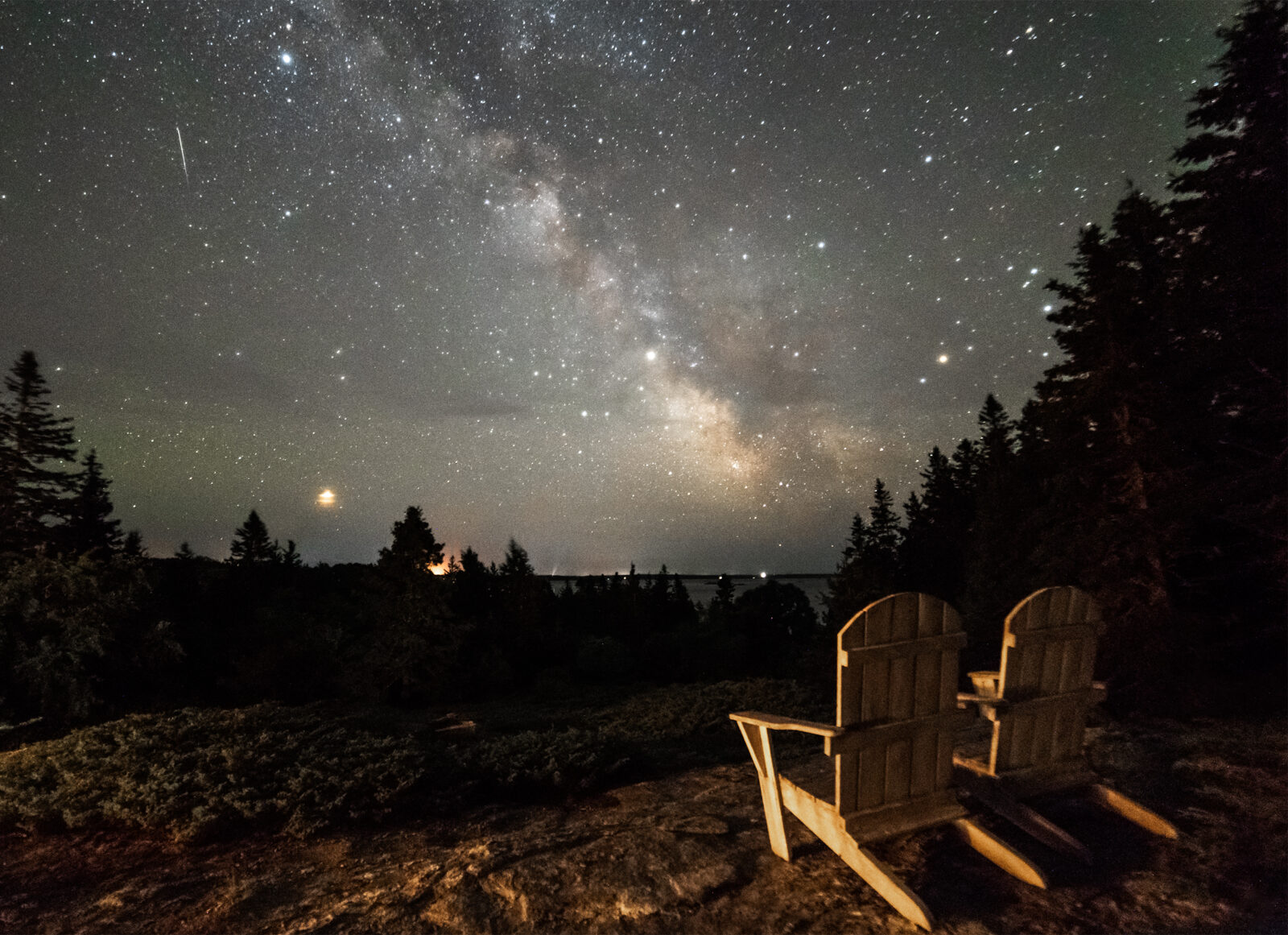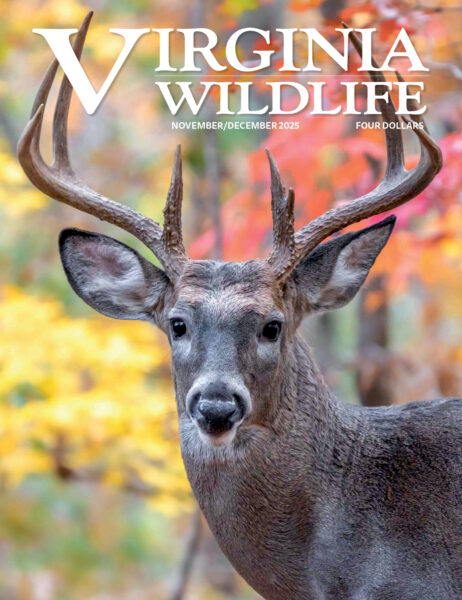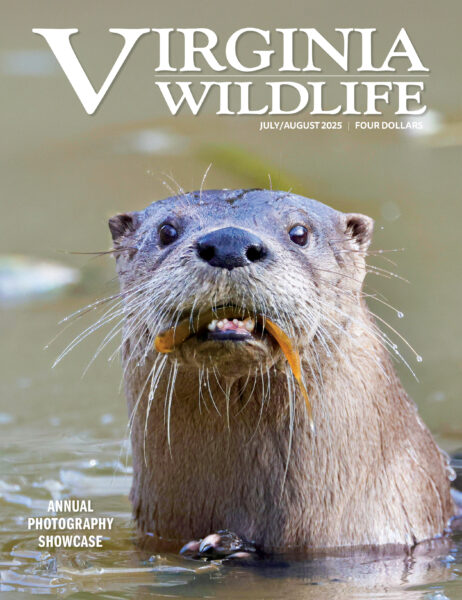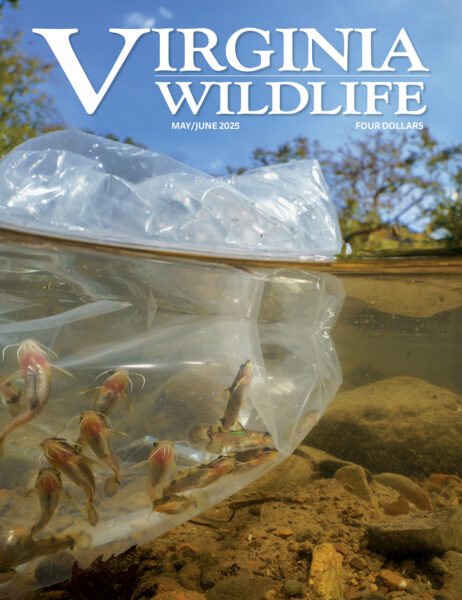
More remote locations can offer darker skies and stunning views of the Milky Way, such as this image taken in rural Nova Scotia.
By David Murr, DWR Digital Outreach Coordinator
Photos by David Murr
On a whim one summer evening, I packed up my camera gear and headed out to a meadow near my home in a rural part of central Virginia. After allowing my eyes adjust to the dark, I could make out the faint contours of the Milky Way in the sky. I pointed my camera, adjusted some settings, and clicked the shutter release.
Twenty-five seconds later, the image on the back of my camera astounded me. Even with no processing, the image revealed our galaxy’s complex structure arching over the landscape. In retrospect, that first photo was nothing special and I had almost no idea what I was doing, but I was hooked and eager to learn.
While photographing night sky landscapes is quite different from most other forms of photography, it’s not terribly difficult with a bit of planning and practice, and capturing your own photos of a star-filled landscape can be incredibly rewarding.
Recommended Equipment
You’ll need a DSLR or mirrorless camera that can shoot in RAW format, a wide-angle lens that preferably has a maximum aperture of at least f/2.8, a sturdy tripod, and a remote shutter release. A head lamp with a red light option (to preserve your night vision) is also helpful.
Planning
Before heading out, you’ll want to do some planning to find the best time and location for your night sky shoot.
Although the Milky Way is visible in the Northern Hemisphere year-round, the brightest part—the galactic core—is most prominently on display in our skies during the spring and summer months.
You’ll want to find a location that’s as far as possible away from city lights. Truly dark skies are hard to come by in much of Virginia, even in fairly rural areas, but there are nonetheless plenty of sites that offer fantastic night sky views. Big Meadows in Shenandoah National Park is a good place to start, as is Staunton River State Park (a designated International Dark Sky Park), as well as the Virginia Department of Wildlife Resources’ (DWR’s) Powhatan Wildlife Management Area.
After narrowing down your potential locations, you’ll also need to keep an eye on the weather and phase of the moon. Picking a relatively clear night around the new moon is ideal for getting the best view of the Milky Way.
There are various websites and apps that can help you with location scouting and planning your desired compositions so you can spend more time in the field actually capturing images. Check out our list of resources.
Setting Up On-Site
Once you’ve arrived at your chosen site, find a clearing away from trees and structures that gives you a view of the sky as far down to the horizon as possible. Set your camera up on the tripod, adjusting its positioning to create the composition you want. While you can certainly use objects in the foreground to enhance your composition, you may find it easier to start by concentrating on photographing just the sky at first.
During the summer months, the core of the Milky Way will be visible to the south, so you’ll want to point your camera in that direction. If you’re at a dark site, you should be able to see the faint white gossamer bands of the Milky Way stretching into the sky once your eyes have had sufficient time to adjust to the darkness. Remember to use only your red light to preserve your night vision.
Don’t forget to connect your remote shutter release, so you can take photos without touching the camera. This will help minimize any shaking that would produce a blurry image.
Focusing in the Dark
Although modern autofocus systems are fantastic, they won’t help in complete darkness, so you’ll be relying entirely on manual focus. Although some lenses will be focused properly when set to the “infinity” mark, most require some adjustment to get the stars perfectly sharp. The easiest way to focus in the dark is to find a bright star and center it in the frame using your camera’s “Live View” function. After zooming in on the live image, make small adjustments to the focus ring until the star you selected is a perfect point. Focus peaking can be a helpful aid, if your camera supports it.

Carefully including foreground elements, such as these Adirondack chairs, can add visual interest and an element of uniqueness to your photos.
Camera Settings
The most critical setting you can possibly make for night sky photography is to shoot in RAW mode. It will give you considerable latitude in post-processing that simply isn’t possible when shooting JPEGs.
How long you should expose your image depends on several factors, including the amount of light pollution at your location, how well your camera handles high ISO values, and the focal length and maximum aperture of your lens.
If you expose too long for your lens’ focal length, you risk turning stars into trails rather than round points. A common rule of thumb is to use the “500 Rule” to determine the maximum amount of time you can leave the shutter open before noticing star trails.
The rule is simple: divide 500 by the focal length of your lens to get the maximum exposure time. Therefore, for a 14mm lens: 500/14 = 35.7 seconds. A 24mm lens, on the other hand, gives you 20.8 seconds of exposure time.
If you’re using a crop-sensor camera with a lens that was designed for a full-frame camera (Canon EF or Nikon FX lenses, for example), you’ll need to multiply the focal length by your camera body’s crop factor first — for example, a Canon Digital Rebel’s crop factor is 1.6x, so an EF lens marked 14mm would be the field-of-view equivalent of 22.4mm on a crop-sensor camera (14 * 1.6 = 22.4).
Setting the aperture is the easy part: just use the maximum aperture available with your lens. For many mid-range or better zoom lenses, this will probably be f/2.8.
Selecting an ISO value depends on your camera’s capabilities, but for cameras manufactured in the last decade, ISO 3200 is typically a reasonable starting point, allowing you to evaluate the exposure and adjust as needed.
Paying close attention to your histogram is especially helpful with nightscape photography. To avoid underexposing the image, resulting in a noisier image in post-processing, you’ll want to “expose to the right,” ensuring that your histogram is weighted to the right side, while taking care to avoid clipping highlights. Although the sky straight out of camera will appear to be bright and washed out when using this technique, you’ll be able to make adjustments in post-processing to recover the details in the sky and avoid an overly noisy image.
Post-Processing
Straight out of the camera, night sky images often appear somewhat low-contrast and relatively unimpressive compared to many of the photos you’ve likely seen online. The reason for that is that a significant part of nightscape photography takes place in post-processing to bring out all of the rich detail contained in the RAW file. My tools of choice are Lightroom and Photoshop, but any similar applications will work. A post-processing workflow is beyond the scope of this article, but experimentation and practice are the keys to success.
Advanced Techniques
Simply capturing a star-filled landscape can be exciting, but as you gain experience shooting in the dark and dealing with the unique challenges that come with this type of photography, don’t forget to compose your images with the same care that you would any photo. The same rules you normally follow, whether adhering to the rule of thirds or finding leading lines, also apply to nightscape images. Ironically, perhaps, one of the most impactful parts of a night sky image is often the earthly foreground—whether you choose to shoot at a location with an impressive landscape, include a person in the frame, or use some other creative element to make your photos more interesting.
As your skills and comfort level progress, you can also begin to experiment with advanced techniques, such as using tracking mounts for longer exposures, compositing multiple images, or shooting at longer focal lengths to capture more detail in sections of the Milky Way.
See more on advanced techniques and basic post-processing.
David Murr is the digital outreach coordinator at DWR and an amateur photographer, focusing on night sky and landscape images. You can find him on Instagram at @davidmurr.

This article originally appeared in Virginia Wildlife Magazine.
For more information-packed articles and award-winning images, subscribe today!
Learn More & Subscribe







